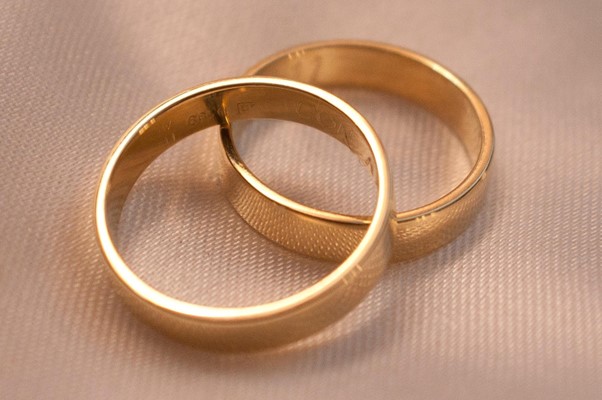Gold is a precious metal that is prized for its beauty and durability. However, even gold can tarnish over time. Tarnishing is the process by which gold develops a dull, discolored appearance due to exposure to environmental factors such as air, water, and chemicals. This article will explore the causes of tarnishing in gold, what tarnished gold looks like, and how to clean and care for your gold jewelry to prevent tarnishing.
Are Tarnished Gold Rings Fake?
One of the first questions many people have when they see tarnished gold is whether or not it is real. The truth is that even real gold can tarnish, so a tarnished gold ring does not necessarily mean it is fake. Gold is a naturally occurring element found in nature and is the most malleable and ductile of all metals. It is also resistant to corrosion, which is why it has been used for jewelry and other decorative items for thousands of years.

However, it is important to note that some gold-plated or gold-filled items on the market may appear tarnished but show signs of wear on the gold plating. You can perform a simple acid test to determine if a gold ring is real. Gold will not react to acid, whereas other metals will.
How Do I Clean Tarnished Gold?
If you have a piece of gold jewelry that has become tarnished, there are several ways to clean it and restore its shine. The first step is gently brushing the piece with a soft-bristled toothbrush to remove dirt or grime. Then, you can use mild soap and warm water to gently clean the piece. Rinse the jewelry with clean water and dry it with a soft cloth.
Another option for cleaning tarnished gold is to use a commercial jewelry cleaner. These cleaners are specifically designed for gold and other precious metals and can be found at most jewelry stores or online. Be sure to read the instructions carefully and follow them exactly to avoid damaging your jewelry.
Common Causes of Tarnishing
There are several common causes of tarnishing in gold jewelry. One of the most common is exposure to air, which can cause a buildup of sulfur and other pollutants on the surface of the gold. This can happen even if you are not wearing the jewelry, as air pollution can cause tarnishing even when the jewelry is stored in a safe place.
Another common cause of tarnishing is exposure to water. Gold is not water-soluble but can be affected by minerals and other impurities in water. This can cause discoloration and dullness in the gold.
Chemicals can also cause tarnishing in gold. This includes perfumes, lotions, and hair care products that contain chemicals that can react with the gold. In addition, exposure to chlorine and other chemicals can cause tarnishing in gold.
What Does Tarnished Gold Look Like?
Tarnished gold typically looks dull and discolored. The color of tarnished gold can range from yellow to black, depending on the severity of the tarnishing and the type of pollutants that have come into contact with the gold. In some cases, tarnished gold may have a greenish or bluish tint, caused by a buildup of copper on the surface of the gold.
Tarnished gold may also have a rough or grainy texture, caused by the buildup of microscopic crystals on the surface of the gold. These crystals can make the gold appear dull and cloudy.
Does Real Gold Turn Black?
One of the most common questions about tarnished gold is whether or not real gold can turn black. The short answer is yes, real gold can turn black. However, it is important to note that this is not a common occurrence and is usually caused by specific circumstances.
Additionally, one of the most common causes of black tarnishing in gold is exposure to sulfur. Sulfur is present in the air and can cause a reaction with the gold, creating a black coating on the surface of the gold. This type of tarnishing can be removed by cleaning the gold with mild soap and warm water or using a commercial jewelry cleaner specifically designed for gold.
Another cause of black tarnishing in gold is exposed to chlorine. Chlorine is often found in swimming pools and hot tubs and can cause a reaction with the gold, turning it black. This type of tarnishing can be removed by cleaning the gold with mild soap and warm water or using a commercial jewelry cleaner specifically designed for gold.
In conclusion, tarnishing is a natural process that can occur in gold jewelry over time. However, with proper care and cleaning, you can prevent tarnishing and keep your gold jewelry looking beautiful for years to come. Tarnished gold does not necessarily mean that the gold is fake; tarnishing can be caused by various environmental factors such as air, water, and chemicals. Tarnishing can be removed by cleaning the gold with mild soap and warm water or using a commercial jewelry cleaner specifically designed for gold. Remember that real gold can turn black, but it’s not a common occurrence and can be removed. If you have doubts about your gold jewelry’s authenticity, it’s always best to consult a professional jeweler.
Don’t wait another day to secure your financial future – Contact American Bullion now to learn about the benefits of a gold IRA and how it can protect your savings from market volatility. Our experts will guide you through the process and answer any questions you may have. Don’t miss out on this opportunity to diversify your portfolio and safeguard your retirement. Contact us now to learn more.
The post Which Gold Doesn’t Tarnish | What Does Tarnished Gold Look Like? first appeared on American Bullion.Original post here: Which Gold Doesn’t Tarnish | What Does Tarnished Gold Look Like?
No comments:
Post a Comment